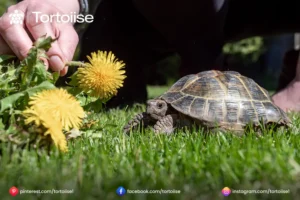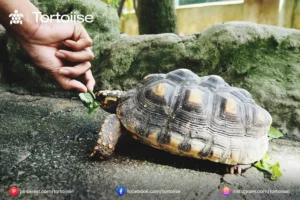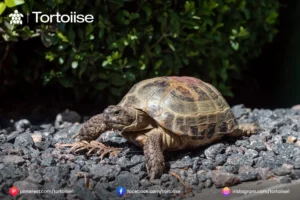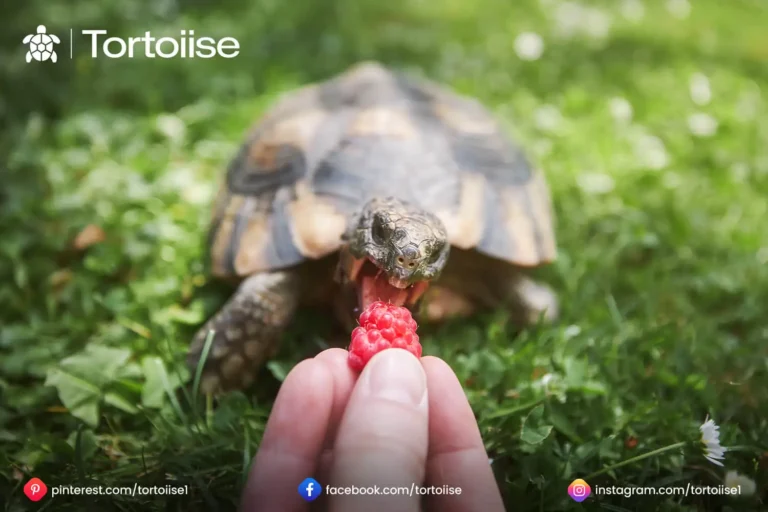How to raise a tortoise
Raise a tortoise
Raising a tortoise can be a fulfilling and satisfying experience. These entrancing reptiles, known for their sluggish pace and long life expectancies, make brilliant pets for individuals who can meet their unique needs. Nonetheless, focusing on a turtle requires in-depth knowledge about their science, habitat, diet, and, generally, well-being. This guide provides definitive information to help you effectively raise a healthy and happy tortoise.

Grasping Tortoise
Tortoises are earthbound reptiles having a place with the Testudinidae family. They are recognized by their hard, domed shells, strong appendages, and herbivorous eating regimens. Prior to bringing a tortoise into your home, understanding its requirements and behaviors is fundamental.
Normal Pet Tortoise Species
Russian Tortoise (Testudo Horsfield): Small size, solid nature, and simple to focus on.
Sulcata Tortoise: Enormous size; requires more than adequate space and warm temperatures.
Greek Tortoise: Conservative and versatile.
Red-Footed Tortoise: Known for its vivid shell markings.
Panther Tortoise: Medium-sized with a striking spotted shell.
Setting Up a Legitimate Living Space
1. Is Outside versus Indoor Walled-in area
Outside Nook Ideal for bigger species like Sulcata and Panther tortoise. Open-air living spaces emulate regular circumstances and consider normal ways of behaving, for example, relaxing and brushing.
Indoor fenced-in area Reasonable for more modest species like Russian or Greek tortoise, particularly in colder environments.
2. Fenced-in area size
Give adequate space to investigation and exercise. A basic principle is a base nook size of 10 square feet for more modest tortoise and up to 50 square feet or something else for bigger species.
3. Substrate
Utilize a substrate that imitates the indigenous habitat, like a combination of dirt and sand or coconut coir. Stay away from substrates like cedar or pine shavings, which discharge unsafe oils.
4. Temperature and Lighting
Relaxing Region Keep a temperature of 90-100°F (32-37°C) in the luxuriating spot.
Cool Region: Give an inclination to cooler regions around 70-80°F (21-27°C).
Evening Temperature Shouldn’t decrease below 60°F (15°C) for most species.
UVB Lighting is Fundamental for vitamin D3 synthesis and calcium assimilation. Supplant UVB bulbs every 6 years, as their viability reduces over the long haul.
5. Moistness Levels
Research your tortoise species’ particular moisture needs. For example:
Mediterranean Tortoise (e.g., Greek, Russian): Incline toward low stickiness (40-half).
Tropical Tortoise (e.g., Red-Footed): Requires high moistness (70-80%).
Utilize a hygrometer to screen moisture levels and fog the nook if necessary.
6. Asylum and Concealing Spots
Give concealing spots like logs, caverns, or plants for your tortoise to withdraw and have a real sense of reassurance.

Diet and Nourishment
An even eating routine is basic for your tortoise’s well-being and life span.
1. Staple food varieties
Salad Greens: Collard greens, kale, dandelion greens, and mustard greens.
Vegetables: squash, zucchini, ginger peppers, and carrots (with some restraint).
Organic products: Offer sparingly (e.g., strawberries, apples, and melons) as a treat.
Palatable Weeds and Blossoms: Hibiscus, clover, and nasturtiums.
2. Stay away from unsafe food varieties.
Iceberg lettuce (low dietary benefit), avocado (harmful), and rhubarb.
3. Calcium Supplementation
Furnish calcium powder regardless of vitamin D3, contingent upon their UVB exposure. Offer cuttlebone for extra calcium.
4. New Water
Continuously give spotless, shallow water for drinking and drenching. Supplant the water day to day.
Well-being and Health
Normal medical problems
Respiratory Diseases
Side effects include wheezing, bodily fluid release, or dormancy. Frequently brought about by low temperatures or high humidity.
Shell Decay
A contagious or bacterial disease that shows up as delicate, stained patches on the tortoise shell.
Metabolic Bone Sickness (MBD)
Brought about by calcium deficiency or deficient UVB lighting. Side effects include delicate shells, dormancy, and disfigurements.
Parasites
Worms or protozoa can cause loose bowels or weight reduction.
2. Standard Vet Visits
Plan yearly check-ups with a reptile veterinarian.
3. Cleanliness and Cleaning
Clean the fenced-in area week after week and eliminate squander day to day.
Clean food and water dishes routinely.
Social Contemplations
1. Action Levels
Tortoises are, by and large, more dynamic during the day. Give valuable open doors to investigation, climbing, and digging.
2. Requirements
Most tortoises are solitary and like to live alone. Lodging numerous tortoises together can prompt pressure and hostility, particularly between males.
3. Indications of Stress
Stowing away for broadened periods, rejecting food, or unnecessary murmuring might demonstrate pressure or distress.
Occasional Consideration
1. Hibernation (Brumation)
A few animal varieties, similar to the Russian and Greek tortoise, sleep throughout the colder months.
Readiness
Guarantee your tortoise is solid before hibernation by consulting a veterinarian.
Climate
Give a cool, dull spot with predictable temperatures (35-50°F or 1-10°C).
Observing: Check your tortoise occasionally and guarantee it doesn’t lose a lot of weight.
2. Summer Intensity
Give concealed regions and keep away from delayed openness to outrageous intensity.

Taking Care of and Connection
1. Safe Taking care of
Continuously lift your tortoise tenderly by supporting its shell from under. Try not to hold it topsy-turvy or by its appendages.
2. Building Trust
Permit your tortoise to normally move toward you. Stay away from continuously taking care of it, as it can pressure the creature.
3. Improvement Exercises
Establish an invigorating climate with a fluctuating landscape, palatable plants, and items for climbing or tunneling.
Legitimate and Moral Contemplations
1. Research Neighborhood Regulations
Some turtle species are safeguarded under wildlife protection regulations. Guarantee you have the essential grants.
2. Embrace, Don’t Buy
Consider adopting a tortoise from a salvage association instead of buying from pet stores or reproducers.
3. Stay away from Wild-Got Tortoise
Wild-contracted tortoise might convey infections and can experience the ill effects of the pressure of imprisonment.
Difficulties of Raising a Tortoise
1. Long life expectancy
Tortoises can live 50-100 years, requiring a deep-rooted responsibility. Think about likely arrangements, like passing the consideration of your turtle to a confided-in relative.
2. Space Necessities
Bigger species require broad, outside, walled-in areas, which may not be reasonable for all everyday environments.
3. Cost
Tortoise care can be expensive, including nook arrangement, lighting, and veterinary visits.
Raising a tortoise is a rewarding experience that requires cautious preparation, responsibility, and comprehension of their remarkable needs. By giving a reasonable, natural surroundings, a nutritious eating regimen, and legitimate care, you can guarantee your turtle flourishes into the future. With persistence and commitment, your turtle won’t just turn into a loved buddy but, in addition, a living demonstration of the miracles of nature.

